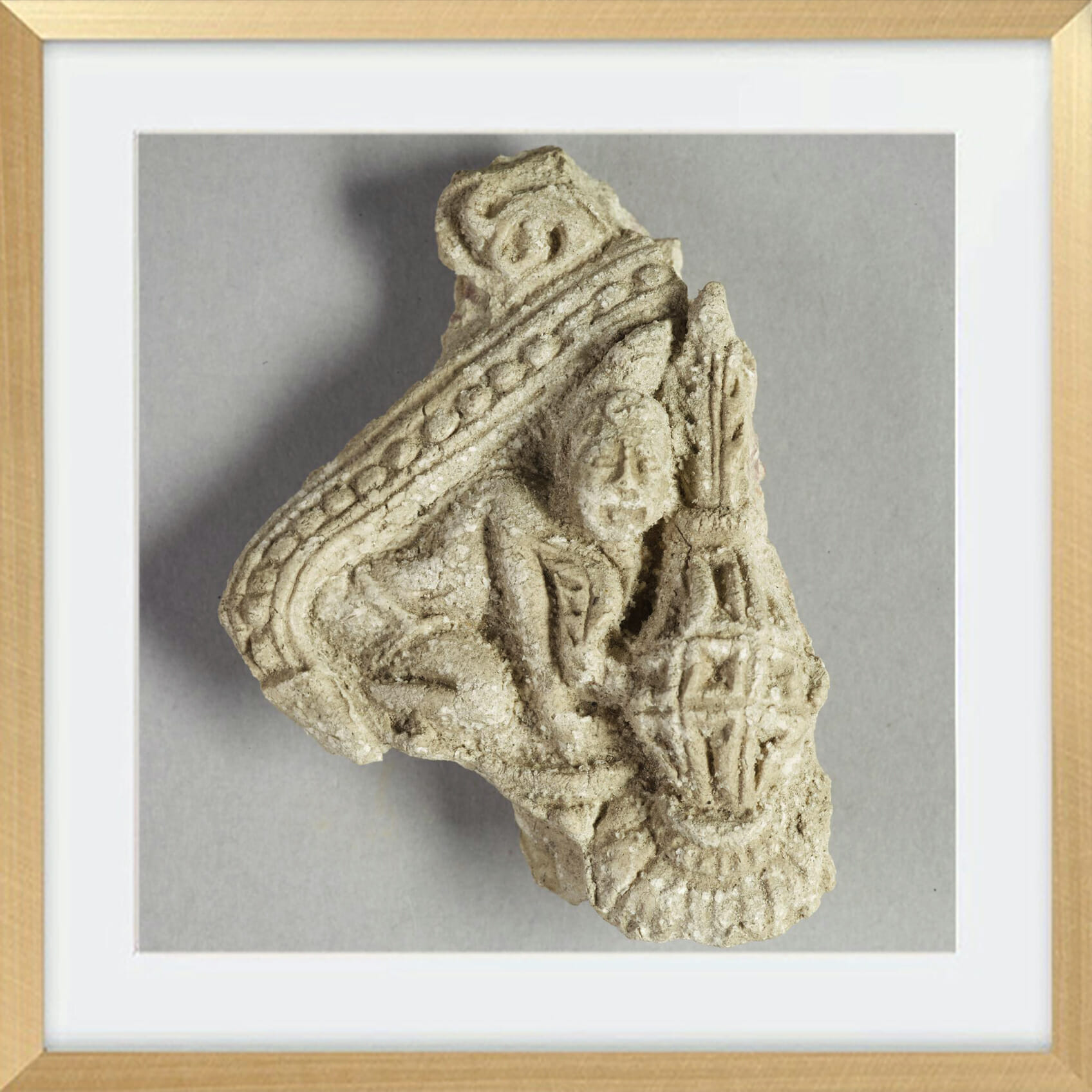We find it fascinating that the Triple Gem has been shown in such a variety of ways in different Buddhist cultures. A trident or three wheels frequently represent the triratna (Sanskrit: tri-ratna or ratna-traya) symbol in ancient India. It may be seen on numerous ancient coins and stone sculptures. For example it decorates the gates of the Great Stupa of Sanchi. Buddhist temple roofs in Japan and Korea have three little circles inside a bigger circle painted on them. In Tibetan art the Three Jewels (Tibetan: dkon-mchog gsum) are frequently depicted on thangka paintings towards the bottom, encircled by flames.
“Just like a kaleidoscope projects infinite possibilities, this artwork portrays that boundless quality of the three jewels. By training in sacred outlook, we can see the true world as a mandala of the triratna, a vivid illusion rich in colours and potentials. Hope you enjoy the sparkles.”
“In this depiction of the Three Jewels, the Buddha, the Dharma and the Sangha are represented by three dharmachakras supported reverently by offering goddesses. The dharma wheels are framed by the arc of a retreat hut, and flowers bloom in the surroundings indicating the flourishing of the Dharma.”
“This painting was an exploration of the joy and painful limits of playing with symbols. It was also an attempt to use three-fold logic as well as humour to explore the images and essence of Buddha, Dharma and Sangha. When in doubt “Eat the Truth”!
“A single compass-drawn line unfolds nested tripartite figures and reveals a series of powerful interlinked geometric shapes; the triquetra, mandorla, symmetrical lens, Reuleaux Triangle, teardrop, and the crescent-shaped flaying blade of Vajrayogini. The power and mystery of this simple three-part geometry is symbolic of the power and mystery of the three jewels, and also suggestive of the infinite creative potential of emptiness and of the geometrical sub-structures underlying the living world.”
“Namo ratna trayāya is a classical Sanskrit formulation meaning, “Homage to the Three Jewels.” It is rendered here in the Horyig (Mongolian) script, invented by the head of the Sakya Lineage Drogön Chögyal Phagpa at the request of Kublai Khan.
The three square panels, the triangular arrangement, and the triquetra motif all symbolize the Triratna (three jewels). The eight external corners symbolize the eightfold noble path. The twelve triangles symbolize the 12 links of interdependent co-arising, and the black back-ground giving rise through sheer absence to the white foreground figures symbolizes emptiness and its creative power.
The swastika, contrary to its recent infamy, is a motif symbolizing well-being found in ancient cultures across Europe, Asia, Africa, and the Americas. The earliest attested form is from Ukraine in 10,000BCE.
For the Buddhists, the swastika is an extremely important symbol, often placed in sculptural form at the Buddha’s heart center. Deriving from Sanskrit su-asti, its literal meaning is ‘all is well’. Here, the interlocking left- and right-oriented swastikas are suggestive of the influence of Bon on the Tibetan Buddhist world, as well as the ‘right-‘ and ‘left-handed paths’ of sutra and tantra.”



























